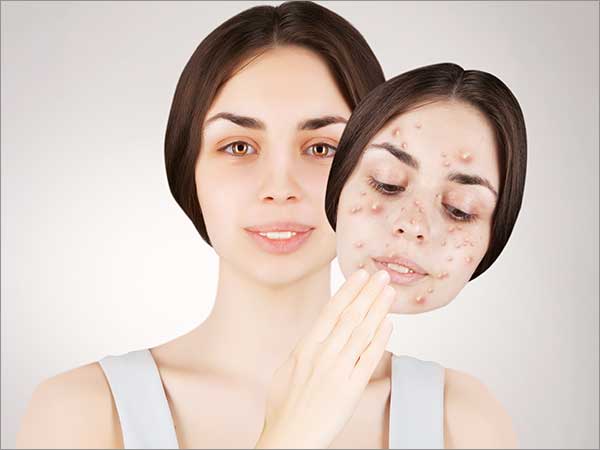Acne is a very common skin condition characterised by comedones (blackheads and whiteheads) and pus-filled spots (pustules). It usually starts at puberty and varies in severity from a few spots on the face, back and chest, which most adolescents will have at some time, to a more serious problem that may be embarrassing, sap self-confidence and cause scarring. For the majority it tends to resolve by the late teens or early twenties but can persist for longer in some people. Acne can develop for the first time in people in their late twenties or even the thirties. It occasionally occurs in young children.
The sebaceous (oil-producing) glands of people who get acne are particularly sensitive to normal blood levels of a hormone called testosterone, which is present in both men and women. This causes the glands to produce an excess of oil. At the same time, the dead skin cells lining the pores are not shed properly and clog up the follicles. These two effects result in a build-up of oil producing blackheads (where a darkened plug of oil is visible) and whiteheads.

The acne bacterium (known as Propionibacterium acnes) lives on everyone’s skin, usually causing no problems, but, in those prone to acne, the build-up of oil creates an ideal environment in which these bacteria can multiply. This triggers inflammation and the formation of red or pus-filled spots.
Acne can run in families, but this does not necessarily mean that if your parents had acne you will get it too.
The typical appearance of acne is a mixture of the following: an oily skin, blackheads and whiteheads, red spots and yellow pus-filled pimples, and scars. Occasionally, large, tender spots or cysts may develop which can either eventually burst and discharge their contents or may heal up without bursting.
Acne is easily recognised by the appearance of the spots and by their distribution on the face, neck, chest or back. However there are several varieties of acne and your doctor will be able to tell you which type you have after examining your skin. The most common type is “acne vulgari
Amrita Homeopathy offers a painless, non-surgical, non-scarring treatment for acne. Emphasis is on the cure of the disease than the suppression of the lesions. Homoeopathy believes that the only way to regain complete health is by removing
all the signs and symptoms present and not just the disease, hence it aims not only to treat the acne but also its underlying cause and individual susceptibility which lead to this infection.
In individuals with underlying immune deficiency homoeopathy proves very effective in building the body’s immunity and stimulating the body’s own healing mechanism to fight the infection.
Therapeutically several remedies are available to treat acne which can be selected on the basis of symptoms like the cause, presentation and modalities. To work upon the susceptibility to the infection, individual constitutional remedy is selected.The commonly used remedies to cure acne are pulsatilla, natrum mur.belladona,berberis auifolium….
Call Us